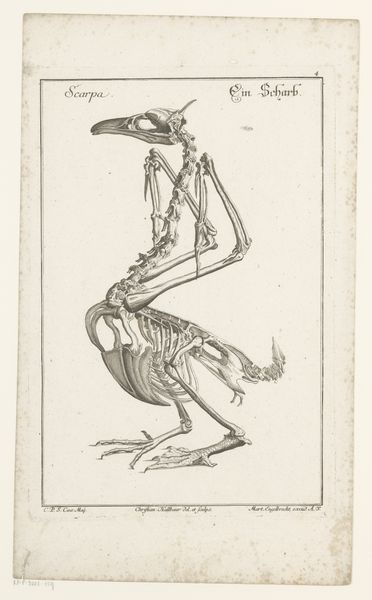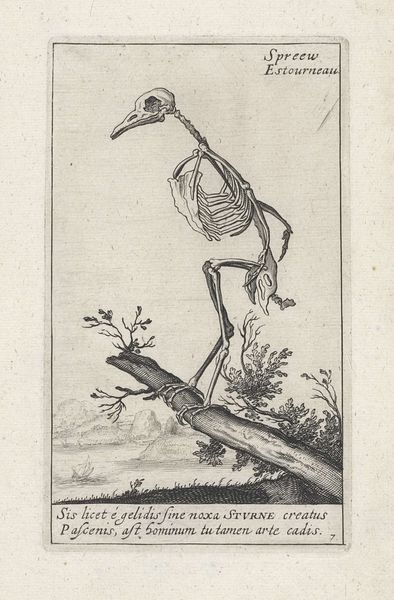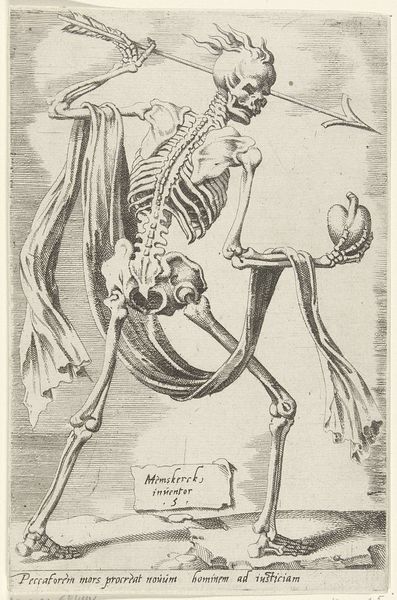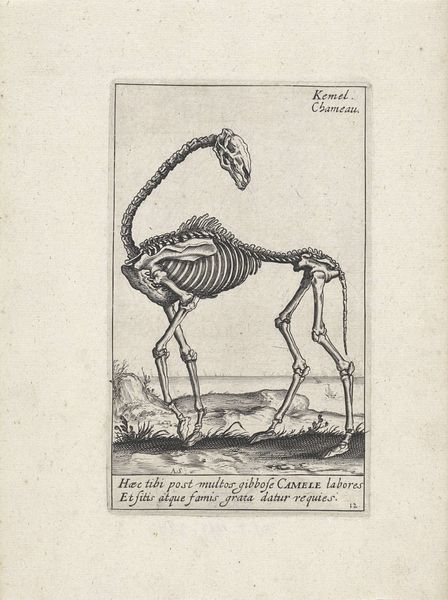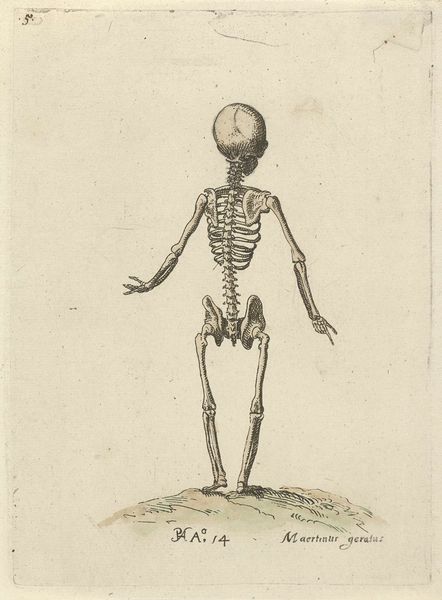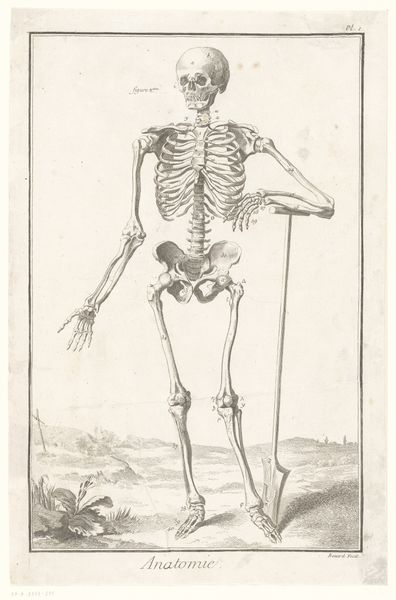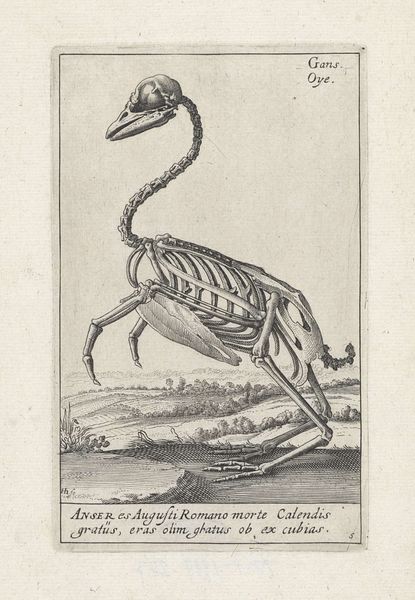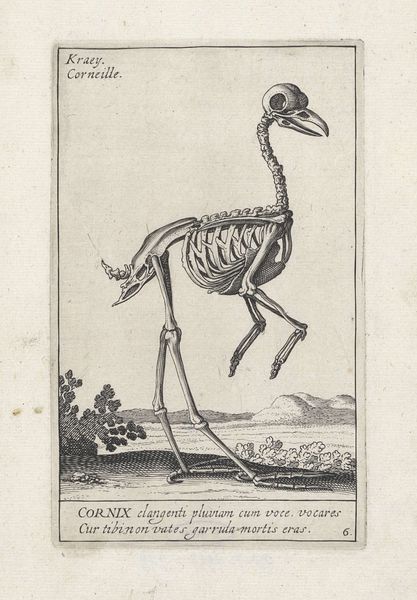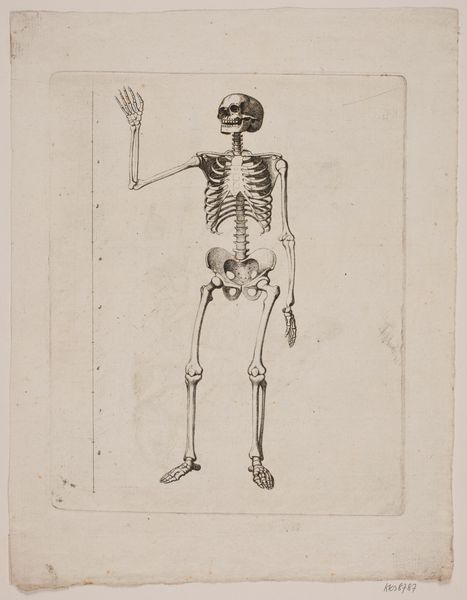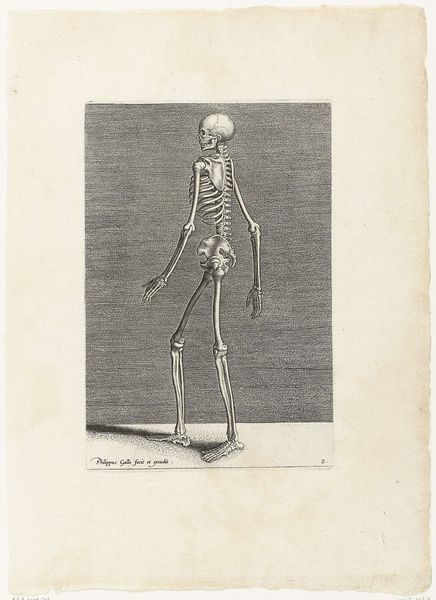
drawing, print, metal, engraving
#
drawing
#
animal
# print
#
metal
#
figuration
#
11_renaissance
#
line
#
engraving
#
realism
Dimensions: height 155 mm, width 94 mm
Copyright: Rijks Museum: Open Domain
Curator: Before us we have a rather striking image entitled "Skeleton of an Indian Rooster," dating back to 1625 or 1626. The artist, Hendrick Hondius I, captured it using engraving. Editor: My initial reaction is that the piece feels quite poignant, despite its seemingly scientific subject. The delicate lines render this skeletal rooster almost vulnerable. The way it hangs its head – is that defeat? Curator: The rooster, particularly in that era, would have symbolized vigilance, courage, even pride. Here, reduced to its barest structure, we're invited to reflect on the fleeting nature of those qualities, and indeed, life itself. Hondius was playing with symbols of pride diminished by time. Editor: Precisely. Look at the background; it gives us some subtle clues. The horizon line is quite low, pushing the rooster towards us in the visual space. And that small sailboat... such a small boat at the far end. Everything is rendered in a cool monochrome; It reinforces that sense of passing, time wearing all matter down. Curator: Consider that early anatomical studies were flourishing at this time. Hondius is combining that emerging scientific interest with a vanitas motif – a reminder of mortality so prevalent in art. The Latin inscription below furthers the concept, as it seems to imply a questioning, or rather mocking of a dead bird’s ability to boast. What use is your crowing or crest now? It references pride that does not sustain past death. Editor: That's right. The print’s success, visually speaking, rests on how it combines linearity with spatial depth; notice that each engraved stroke meticulously defines contour while producing tonal nuances. This is what elevates it beyond a mere anatomical study; we’re contemplating both surface and implication. The stark presentation and sharp details enhance that feeling of impending cessation. It does feel so vulnerable. Curator: It certainly encourages us to consider layers beyond just visual realism. Thank you. Editor: An excellent overview. Thanks.
Comments
No comments
Be the first to comment and join the conversation on the ultimate creative platform.


